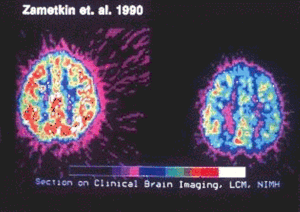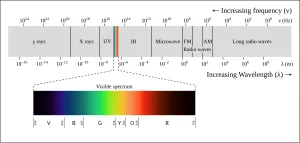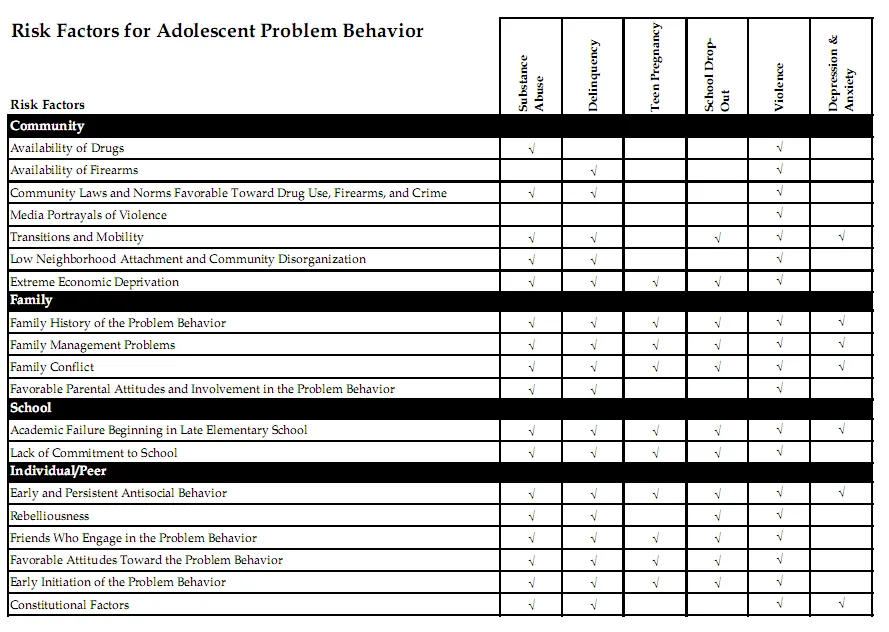Learning
Optimizing Learning Abilities
Prevention & Risk Factors for Learning Related Issues
Preventive Diet:
organically grown fresh fruits and vegetables, soaked and sprouted grains and legumes, whole grain bread
fresh fish 2-4 times weekly
natural sweeteners (raw honey, barley malt, rice syrup)
raw dairy products or goat milk products from organically raised healthy animals
Risk factors:
• refined carbohydrates, sugar, white rice, white bread, processed foods
• food additives (e.g. tartrazine)
• chemicals and pesticides used to raise food commercially
• food salicylates
• phosphates
• allergy foods: wheat, dairy, refined sugar, artificial colors and flavors, chocolate, caffeine, MSG, preservatives
Vitamins:
• B complex: B3, B6, B12, choline
• Vitamin C
Minerals:
• selenium, chromium, manganese, molybdenum, zinc, calcium, iron, magnesium, copper
Risk factors:
• lead, mercury, aluminum, nickel, cadmium, copper (excess), iron (excess)
Amino Acids:
• Glutamic acid, DLPA, tryptophan, tyrosine
Fatty Acids:
• EFAs: Evening Primrose Oil (EPO), etc.
Risk factors:
• hydrogenated oils, fried foods
Body Chemistry:
• 6 hour Glucose Tolerance test
• Allergy or food intolerance testing with Bioregulatory techniques (EAV, Vegatest, Biofield kinesiology)
Risk factors:
• low blood sugar
• food intolerances to dairy, wheat, sugar
Environment:
• appropriate lighting in classroom and home: full spectrum or balanced spectrum lighting
• supportive stress-reducing performance lenses
Risk factors:
• stress: fluorescent lighting, glare;
• glasses designed for distance (6 meters)
• lack of outdoor exercise
Therapy:
• Herbal: gotu kola, gingko, garlic, blue-green algae, chamomile, red clover, lemon grass, hops and sage
• Homeopathy (see list below)
• Syntonic color therapy
• Visual training exercises
• Structure of Intellect (SOI) testing and training
Risk factor:
• Ritalin masks symptoms, but doesn’t improve learning ability
Attention & Activity

Brainscan of brains with and without ADHD (Photo credit: Wikipedia)
Attention-Deficit Hyperactivity Disorder (ADHD) is a frequently used term that means difficulty with the regulation of attention and activity due to unknown causes. All known factors that might interfere with these functions must be ruled out before this term can be applied accurately as defined. However, all ADHD is due to some true set of causes, whether these are known or unknown to the team of doctors and therapists performing the diagnosis. In many cases, contributing causes to the multifactorial problem labeled ADHD can be discovered by searching in directions that may have simply been previously overlooked.
Light & Vision

Complete spectrum of electromagnetic radiation with the visible portion highlighted (Photo credit: Wikipedia)
Out of the whole body, two nerves carry the dominant source of input to the human brain, representing two-thirds of all electromagnetic signals entering the cranium. These are the two optic nerves, carrying a profound energetic as well as information stimulus to the brain. The signals carried by these two nerves are responsible for 80 to 90% of all learning. The simple act of opening the eyes in the morning triggers such an increase in brain activity that the temperature in the brain is raised several degrees. This is followed by a compensatory increase in cranial circulation both to cool the brain as well as to provide the necessary increase in nutrition and drainage to feed the active brain and keep the mind clear. The brain represents only 1/20th of the body’s total weight, yet uses a full 20% of its resources. The brain is made up of about 14 billion nerve cells plus over 100 trillion additional supportive cells.
Research spanning the past 50 years confirms that 20% of children in the average classroom show a constricted visual field. These are typically underachieving children, and many show symptoms associated with ADHD, such as distractibility, low attention span, poor coordination, loss of place, etc. Syntonic therapy using non-invasive visible light frequency stimulation of the retina has been shown to effectively increase this functional form of tunnel vision in 89% of cases. This form of optometric treatment has been used effectively in a wide range of vision and health problems since the early 1930s, yet only a handful of practitioners have undertaken the postgraduate training necessary for Fellowship certification with the College of Syntonic Optometry. Despite the mounting scientific understanding and support for this treatment, there were once more practitioners many decades ago than there are today.
This can be traced to the influence of the FDA in regulating the practice of medicine, and in particular, attempting to ban all non-drug/non-surgical methods of care. Very few doctors are willing to venture outside the apparent safety of approved drug protocols, especially in a field where the federal government literally has a history of burning books and destroying instruments, even if it holds hope for their otherwise untreatable patients. Many cases of ADHD have been reported by syntonic practitioners to have responded well to phototherapy, in many cases assisting parents and medical practitioners in eliminating the use of Ritalin (a drug that normally stimulates the brain). The typical case is found to respond to the lower frequencies of visible light, such as red (a filter designated in classical syntonic literature as alpha). This portion of the spectrum has been shown to stimulate increased brain activity, including faster brain rhythms. Visual fields and visually related behaviors often change measurably and permanently within weeks.
Full-spectrum light in the home and classroom also helps reduce hyperactivity, as documented in a time-lapse video produced by Dr. John Ott, the inventor of both time-lapse photography and full-spectrum light. In Germany, only full-spectrum lights are permitted in classrooms because other fluorescent lights trigger increased levels of adrenal stress hormones in children’s blood. A study in Vermont also found fewer sick days among the children in classrooms that were changed to full spectrum.
Eye movement, the most demanding activity in the entire body, determines the information content in the optic nerves. To maintain optimal visual information processing, the brain must coordinate this movement of the two independent eyes to within about 1 minute of arc both vertically and horizontally. It is eye movement that regulates the brain waves, triggering alpha relaxation waves when the eye muscles are at rest, and beta attention waves when actively fixating visual stimuli. Vision therapists have used oculomotor training techniques for children and adults with learning-related vision problems for several decades. Now some psychotherapists are also finding very effective, though still considered ‘controversial,’ results with eye movement desensitization (EMDR) therapy.
Illiteracy Linked to Vision
A recent study comparing illiterate adults with adult graduate students found that 74 percent of illiterate adults failed at least one test in the New York State Optometric Association (NYSOA) Vision Screening Battery. Even more dramatic was their 60% failure rate on the tracking subtest, while all of the graduate students passed the same test. The study by Roger Johnson, Ph.D., and Joel Zaba, M.A., O.D. was printed in the Journal of Behavioral Optometry, published by the Optometric Extension Program Foundation, of which the author’s father, J. Baxter Swartwout, O.D. is a past-president.
The author, Dr. Glen Swartwout, who participated as a student in the development of the NYSOA test, developed a series of Neuro-Fitness Training modules to help correct problems such as illiteracy. Tracking problems are specifically addressed with a module called Directing Attention (Phase 4 – Level 2). Neuro-Fitness Training also incorporates a system of intelligence testing and training called Structure of Intellect (SOI).
Multiple studies applying functional, behavioral, and development methods of vision improvement to children incarcerated at juvenile halls showed not only a 2 to 3 year improvement in reading levels but also a 90% reduction in recidivism rates, as most of the children in the treatment groups began to find meaning and progression in their academic lives for the first time.

Risk Factors for Adolescent Problem Behavior Chart (Photo credit: Wikipedia) Notice that academic failure is a known risk factor for all forms of adolescent behavioral issues. Notice that this chart takes an external view of the person while changing the internal perceptual and cognitive processes within the psyche of the individual eliminate 90% of the effect of these environmental triggers and therefore represents a more fundamental level of causality.
Plus Performance Lenses. . .
Stress-relieving lenses that improve performance
Optometry has long been aware that the human visual system is designed primarily for distance viewing. We do have the ability to see up close as well, but not easily for long periods of time or under stress. Good vision involves more than just seeing with clarity and comprehension. It involves a good side vision for safety and orientation. It also requires that the two eyes coordinate together for aiming, aligning, and focusing. This represents the highest demand for fine motor control anywhere in the body. It also represents the most exact match required between the two basic parts of the nervous system. This balance is in constant change depending on our visual needs and other stresses.
Optometrists see many people, both children, and adults, who must work too hard to see clearly up close. When a mismatch takes place between visual skills and visual demands, there may be discomfort, fatigue, a drop in performance, or task rejection.
Lenses are used to ease these stresses. They may be in simple reading lens form or in bifocal form.
V. I. Shipman, Ph.D., wrote years ago, “a person under stress observes less, sees less, learns less, remembers less and becomes generally less efficient.”
John Pierce, B.S., O.D., Ph.D., showed that the human heart rate during reading is usually about 10% faster using standard glasses or contact lenses as compared to specially designed stress-reducing lenses. Other effects include improvements in posture, reading speed, comprehension, eye-hand coordination, academic performance, myopia control, muscle tension, respiration rate, and handwriting. With the proper lens, a person works less hard, and gets more done!
Stress-relieving lenses enhance performance and reduce stress. This is recommended for most children and adults who currently wear no lens prescription, as well as for those who wear contact lenses.
The brain, and especially the retina (embryologically part of the brain), which has the highest metabolic rate of any brain tissue, requires a tremendous amount of energy to operate. It also requires a stable biochemical milieu in order to learn, remember, and function efficiently. Sugar regulation is particularly important, since brain cells, unlike other cells in the body, rely only on blood sugar for their energy source. Thus the dietary source of sugars, which includes both refined sugars as well as complex carbohydrates must be carefully regulated. More is not necessarily better, especially in this case.
Several studies reveal that a high protein, low carbohydrate, and sugar-free diet can help many ADHD individuals. In general, proteins have a stimulatory effect on attention and brain activity, while carbos tend to slow down the nervous system, due to their opposing effects on catecholamine versus adrenergic neurotransmitters. One study showed better visual recognition of letters and forms with this type of diet. Another study showed higher nitrogen excretion for hyperactive children. This is also seen with increased exercise, so it may be a result of the hyperkinesis, but would still place an increased demand for optimal protein intake. Thus, with a normal or low ratio of protein to carbohydrate in the diet, a hyperkinetic condition may tend to become a chronic self-perpetuating biochemical imbalance, no matter what the initial trigger was.
Refined sugar alone can be an important factor in attention. A dose of refined sugar has been shown to increase adrenaline in normal children’s blood by an average of 10 times the normal baseline level. This could contribute to symptoms such as anxiety, irritability, and poor concentration. Other studies of hyperactive children have found a correlation between dietary sugar intake and several aspects of hyperactivity, including restlessness, as well as destructive and aggressive behaviors. A study of glucose tolerance in 265 hyperactive children showed abnormal glucose tolerance in 76%. 50% had flat glucose curves, while 15% showed excess peaks with rapid declines, and the other 11% with abnormal responses showed excess peaks with slow recovery.
Several experimental studies show that the problem with sugar is most pronounced in the absence of a balanced diet. 100% of children in a psychiatric hospital who were given a meal of sugar alone showed increased classroom activity. Another study of children under psychiatric care showed increased behavior problems with sugar when combined with either carbohydrates or proteins alone, but improvement when sugar was taken together with both carbohydrates and proteins. A similar study of normal children found that sugar in combination with carbohydrates increased behavior problems, while no significant effect was seen with sugar combined with protein. Yet another study shows that a small amount of sugar (we recommend this be from whole food sources, such as a piece of fruit) eaten with a balanced meal may even improve classroom performance as measured by reaction times, errors, and activity level, while sugar combined with a high carbo meal decreases performance.
Caffeine
While studies show that high doses of caffeine may pharmacologically reduce hyperactive and impulsive behavior, no significant improvement was seen in psychological test scores, and side effects include stomach ache, nausea, and insomnia., Other studies have been interpreted as showing benefits from caffeine among those children who take it habitually. This may be due to the effects of caffeine addiction and withdrawal rather than any positive therapeutic effect. In other words, we believe that those children who use caffeine daily are caffeine-addicted rather than caffeine-deficient. Caffeine stimulates increased insulin release even more than sugar does, which in the long term increases stress on the pancreas and sugar regulation. In addition, one placebo-controlled study showed no significant benefit from the caffeine in hyperactive children. Still, if another pharmacological treatment is considered as the alternative, a trial of caffeine may be the lesser of two evils. In one study, 50% of children responded to caffeine, compared to 62% with methylphenidate.
Another comparison study showed equal improvements in classroom behavior to caffeine compared to methylphenidate.
Vitamins
A number of vitamin deficiencies have been found to affect hyperactivity. Animals fed a variety of diets, each marginally deficient in a different nutrient have shown that deficiencies of B6 and choline can each cause hyperactivity.
32 out of 33 children with hyperactivity responded to supplemental B3 (1.5 to 6 gm daily) when taken with ascorbic acid (3 gm daily). In most cases, niacinamide was effective, while a few cases required nicotinic acid instead. Only in rare instances were very small doses of tranquilizers or anti-depressants needed. All symptoms returned within 30 days when the B3 was changed to placebo and improved again on restoring B3 therapy. This therapy is recommended by the author of the study for children with at least three of the following symptoms: hyperactivity, deteriorating school performance, perceptual changes, and inability to acquire or maintain social relationships.
Vitamin B6 in the range of 1 to 1.5 gm daily may also be beneficial if blood serotonin levels are low. Studies of hyperactive children with low serotonin levels have found that B6 increases serotonin and decreases hyperactivity more effectively than methylphenidate. The benefits of supplementation also continued after supplementation was stopped. Another study evaluated the effect of supplemental B6 (along with B3, B5, and C) in children with normal blood levels of serotonin and found no increase in the already normal serotonin levels. Additional cases have been reported in the literature to respond to B6 alone or in combination with B3.
Vitamin C (500 to 2,000 mg) is considered important in dealing with states of stress and toxicity, including heavy metals, associated with hyperactivity.
Minerals
A number of mineral deficiencies and toxicities have been found to affect hyperactivity. Animals fed a variety of diets, each marginally deficient in a different nutrient have shown that deficiencies in copper and magnesium can each cause hyperactivity.
Copper toxicity has also been found in children who showed improvement on the Feingold diet as compared to hyperactive children who did not improve on the same diet. A case has also been reported where eliminating excess copper through oral chelation including vitamin C, manganese, molybdenum, and zinc resulted in significant improvement in symptoms including hyperactivity and ringing in the ears.
Increasing calcium intake can eliminate symptoms of hyperactivity due to calcium deficiency, as was demonstrated in one case in which a four-year-old boy had already been treated with drugs for 2 and a half years. Symptoms improved within 2 months and he was able to stop taking medication.
Iron deficiency, which may be the most common nutritional deficiency in American children, is associated with both irritability and attention deficits.
Magnesium deficiency, too, can cause fidgeting, anxiety, restlessness, psychomotor instability, and learning problems despite a normal IQ.
Phosphates, found in processed foods can also cause behavior problems in children, which may be counteracted by increasing dietary magnesium, as well as by avoidance. A double-blind study of hospitalized hyperaggressive children showed significant changes in aggressive behavior in relation to the level of phosphate in their diet. Phosphates are found in processed and canned meats and cheeses, baked goods (as phosphate baking powder), most soft drinks, instant soups and puddings, and various toppings and seasonings.
Low zinc levels have been observed in hyperactive boys compared to matched controls, as measured in urine, hair, serum, and fingernails. It was also found that the food additive tartrazine increased urinary loss of zinc, and worsened the hyperactivity symptoms of zinc deficiency in 100% of cases, while smaller percentages also developed eczema or asthma symptoms following tartrazine ingestion.
Aluminum toxicity has been found in the population of children suffering from hyperactivity and learning problems.
Lead toxicity (measured in hair, blood, or urine) has been observed in a number of studies in relation to cerebral dysfunction and aggressive, anti-social, and hyperactive behaviors. The effects are dose-dependent with no threshold, such that even minimal increases in the levels of lead may have a profound effect.
Practitioners have also reported stabilization of blood sugar and related behavior with Chromium supplementation (50 to 200 mcg).
Essential Fatty Acids
Essential fatty acids (EFA), such as linoleic acid, may be deficient or poorly digested, absorbed, and metabolized by hyperactive children. This is supported by a number of observations on this population. Most of the foods which can cause hyperactivity inhibit the conversion of EFA’s to prostaglandins. For example, the commonly implicated foods, wheat, and milk produce exorphins in the gut which block conversion to PGE1. Zinc, also required in this conversion, is deficient in this group. Males, who are most commonly affected, are known to need more EFA’s than females. Increased thirst, a symptom of EFA deficiency, is found in a high percentage of hyperactive children. Eczema, allergies, and asthma, all of which can be helped with EFA supplementation, are common in these children. One study using evening primrose oil (EPO, 1 to 1.5 gm twice a day) found good results with hyperactive children. Two other studies failed to achieve significant results with EPO alone.
Amino Acids
Supplementation with D,L phenylalanine can be moderately effective for short-term improvement in adults with attention deficit disorder. D-phenylalanine has not been found significantly effective in boys with hyperactivity.
L-tryptophan supplementation (not available in the United States at this time) improved behavior slightly within one week in children with attention deficit disorder and hyperactivity.
Tyrosine may improve ADD symptoms in adults, but tolerance appears to develop with loss of therapeutic benefits by about 6 weeks.
Food Sensitivities
Tartrazine can trigger increased hyperactivity as well as eczema and asthma in zinc-deficient boys. 58% of preschool hyperactive boys improved on a diet eliminating refined sugar, artificial colors and flavors, chocolate, MSG, preservatives, caffeine, and other known food reactants. Other symptoms that improved included bad breath, waking up at night, and difficulty falling asleep. 82% of overactive children placed on a diet avoiding food antigens showed improvement, with 28% achieving totally normal behavior. In the double-blind crossover, placebo-controlled experiments 48 different foods were found to have the potential to trigger hyperactivity.
The most frequently problematic were artificial colors and preservatives. In another study, the most frequent reaction found was to the phenolic compound acetylsalicylate (80%). (Salicylates along with food additives are avoided in the Feingold diet) Sugar, corn, beef, and eggs were the most common food reactants, affecting 20 to 30% each. Cat hair and house dust each also reacted in 25%. Yet another study found that 7 out of 10 children with ADHD improved dramatically by avoiding all food sensitivities, while the other 3 showed only partial improvement on several standard objective psychological tests and 3 neurological tests. 78% of parents and 54% of teachers could tell changes in behavior under double-blind conditions when children were given mixtures of food and inhalant substances to which they had been found reactive.
Children and their parents are often sensitive to the same dietary factors. One study found that 100% of parents of children with tension and fatigue symptoms also suffered from the same food and chemical sensitivities as their children. The children had symptoms including pallor (100%), sleep disturbance (100%), congestion (92%), abnormal EEG (84%), urinary problems (80%), night sweats (72%), digestive problems (72%), and respiratory problems (60%). All of the children were found to have cravings for junk foods containing refined carbohydrates and chemical additives compared to their siblings. The parents were affected by tension, fatigue, obesity, anxiety, depression, phobias, and hallucinations. In other studies, many of the children also show additional symptoms which include headaches, stomach aches, leg aches, bed-wetting, nasal congestion, and skin problems.
Clinically, a multifactorial approach to allergy and sensitivity is most likely to be effective. Sensitivities can be compounded by pre-existing toxicity, so detoxification, especially of the liver, is important in the long run to reduce sensitivity while avoiding problematic chemical food additives which are an unnecessary burden on the body anyway. Allergy often relates to “leaky gut syndrome,” which is further exacerbated by histamine release in response to the offending food allergens. Toxins, parasites, or other triggers of inflammation in the mucous membranes of the gut open holes between adjacent epithelial cells, permitting the absorption of only partially digested (and thus still allergenic) food particles into the immune-rich tissues of the gut, such as Peyer’s patches. Avoiding the aggravating foods, while working on elimination of the underlying mucosal stressors is indicated.
Also, providing additional support for healing the gut membranes, and even stabilizing mast cell membranes with bioflavonoid supplements such as hesperidin can often speed the process. Enhancing both diet and digestion is always helpful. Reduction of concomitant stress patterns can be remarkably beneficial as well. A well-known pediatrician, Dr. Wunderlich, has often observed that children going through optometric vision therapy often show decreases in their food allergy symptoms. Conversely, reducing food allergies is often found to improve the quality and consistency of visual focusing performance.
Herbs
Herbs with a calming effect that are tolerated by children include chamomile, red clover, lemongrass, hops, and small amounts of sage. Gotu kola, ginkgo, garlic, and blue-green algae have also been suggested as beneficial.
Homeopathy
Based on clinical experience, some of the homeopathic remedies that can help with ADHD include Argentum nitricum, Arsenicum album, Baryta carbonica, Borax, Calcarea phosphorica, Chamomilla, Cina, Hyoscyamus, Lycopodium, Murcurius solubilis, Nux vomica, Pulsatilla, Rhus toxicodendron, Stramonium, Sulphur, Tarantula, and Veratrum album. Several categories of complex homeopathic remedies may also be considered, including those which address airborne allergy, food allergy or intolerance, sugar regulation, aerobic cellular respiration, digestion, liver function, brain function, heavy metal detoxification, mineral metabolism, vitamin metabolism, and particularly the B complex vitamins.
